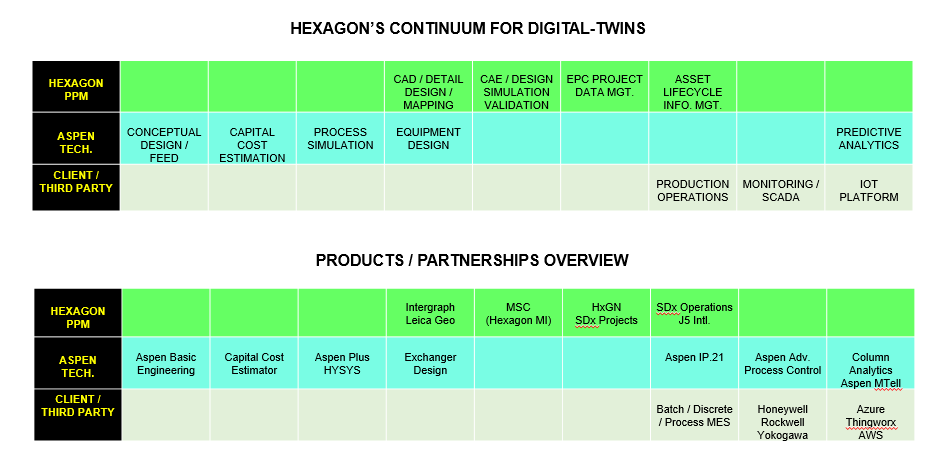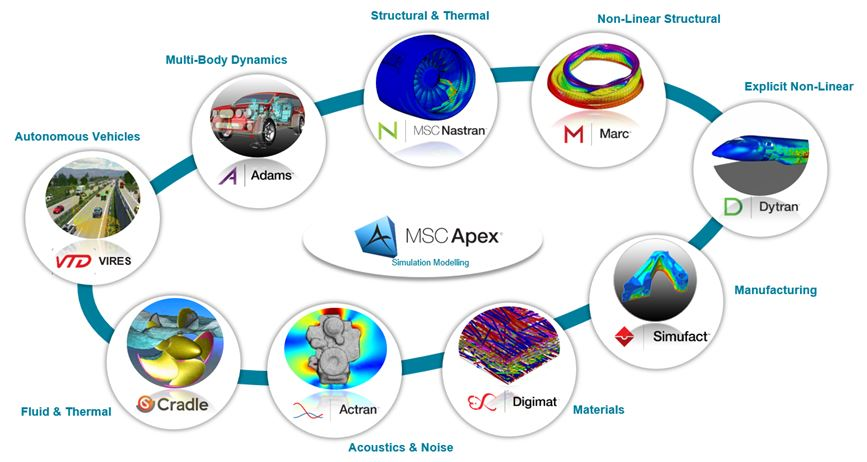HOW PERVASIVE DIGITAL-TWINS ARE EXTENDING ENTERPRISE INTELLIGENCE
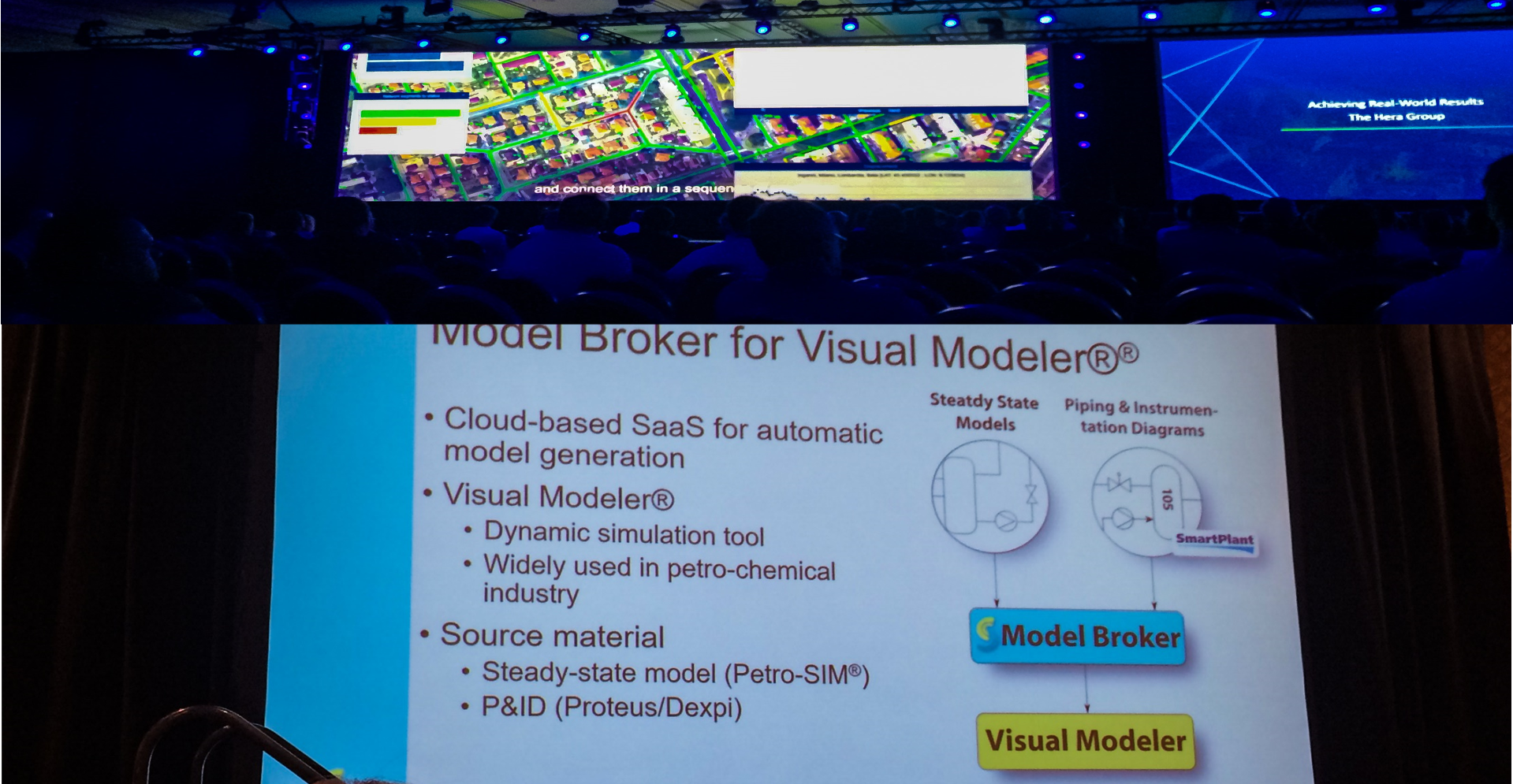 HxGN LIVE - A Post-Conference Report
HxGN LIVE - A Post-Conference Report Summary
The Digital Twin is used to create demonstrable business value along several axes. They are modelled and applied at the individual asset and at the plant-level, tracking its evolution and performance over the entire lifetime. The twin models are continuously updated as the physical asset is operated. At any moment the twin represents a faithful representation of the current state of the asset; the output of the model changes with every fuel burn hour. They are also scalable. Benefits are derived when hundreds or thousands of similar assets have their own digital twins. A twin tracking a single asset learns from similar assets. They are also adaptable, and can transfer learning to another part or asset class, or adapt to new scenarios or new factors.
Hexagon’s PPM division recently unveiled an important partnership with Aspen Technologies to clarify its point-of-view on its digital twins opportunity, and the industrial digitalization currently underway across its addressable market sectors.
“The Single Greatest Need In Business Today Isn’t Automation, Its Autonomous Insight. It Means Being Able To Leverage Vast Amounts Of Data – Behind The Scenes, Where Connected Devices And Machines Interpret What’s Happening And Why, And Then Act Accordingly, Autonomously” (Ola Rollen, CEO Hexagon)
The maturity path of a digital twin: From Design-twin (a graphical 3D static scale model for project simulation at project start, through to EPC with versions for various stakeholders) –to- Process-twin (early simulation of an operating process) –to- Operational-twin (Dynamic late-stage simulations to validate operations and control strategy, as designed; monitoring individual critical assets, control systems, and software; a twin that visualizes the real-time state of the plant –to- Performance-twin (an extension of the operational twin, with learning capabilities (as opposed to visualization alone) that analyzes trends and variations from operating norm comparing with historical operating data. Additionally, it leverages algorithms to predict time to failures and to optimize overall process and operational efficiency, ie achieve cost & schedule discipline and eliminate waste.
Hexagon PPM’s viewpoint of digital twins encompasses integration of information through the entire life-cycle of a plant asset through to start-up and their continued operation.
Partnering with Aspen Technologies to bring upstream engineering estimation, conceptual designs, engineering planning and process simulation capabilities; Partnering with the client’s domain knowledge of plant production operations and real-time performance monitoring as a way of managing asset health and downstream plant O&M life-cycle; Hexagon PPM brings its own capabilities in supporting detailed engineering design and simulation, plant project commissioning and start-up activities, as well as operational processes, workflow documentation and routine information hand-offs that take place between equipment, people and processes.
The Digital Twins Design Opportunity
A digital Twin is an organized representation of physics-based methods and advanced analytics used to model the present state of every asset in a digital industrial world.
By incorporating multi-physics simulation, data analytics, and machine learning capabilities, digital twins are able to demonstrate the impact of design changes, usage scenarios, environmental conditions, and other endless variables – eliminating the need for physical prototypes, reducing development time, and improving quality of the finalized product or process.
Hexagon’s PPM business unit is one market player aiming to deliver on the vision of an autonomous connected ecosystems where data is connected seamlessly through the convergence of the physical and digital world, and intelligence is built in to all processes – a $10-trillion addressable opportunity. Its path to achieve this is a logical acquisition strategy of component technologies that play at various points in a workflow (addressing the unique needs of its target industries – Process, Plants and Marine industries), and stitching them together into a seamless modelling experience.
As projects have become more complex, information has become fragmented, existing in multiple databases in numerous mutually non-compatible formats. Data continuity is a challenge. Multiple points of data entry abound throughout the workflow.
In our view, the imperative of digital twins is to create a single source of the truth and an integrated end-to-end workflow for digital project delivery leading into highly efficient operations downstream.
The perfect digital twin must bridge the conceptual insight connectivity between individual asset, the production system (of which it’s an integral interconnected component) and its performance (how these assets work together synchronously to deliver on a designed outcome). At its core, the digital twin consists of sophisticated models or system of models based on deep domain knowledge of specific industrial assets. The twins are informed by a massive amount of design, manufacturing, inspection, repair, online, sensor and operational data. It employs a collection of high-fidelity computational physics-based models and advanced analytics to forecast the health and performance of operating assets over their lifetime.
To cover the entire domain of autonomous connected ecosystems however, digital twins must expand their scope to a larger industrial scenario that also involve operational processes, workflow documentation and routine information hand-offs that take place between equipment, people and processes. Looking at work processes and their outcomes for customers (uptime, reduced safety incidents, better access to plant information) has created bigger opportunities for value delivery.
Echoing Hexagon’s CEO Ola Rollen: “While the promise of IoT era is anchored in vast amounts of useful data being generated, the challenge has always been our ability to actually put it to use. Businesses must tame the complexity they are generating by their very own IoT strategies and the enormous amounts of data they create.”
The evolution of digital twins in an enterprise weaves through several maturity steps each targeting key phases of a project, its relevant stakeholders and their data requirements. Four big types of information are required and used in these phases. We will examine them in detail in the context of digital twins.
Aligning CAD, CAE & Process Simulation Synergies
Hexagon’s PPM division recently unveiled an important partnership with Aspen Technologies to clarify its point-of-view on the industrial digitalization currently underway across its addressable market sectors. The core traditional strengths of Aspen Technologies’ lie in the upstream conceptual process-planning and simulation, basic engineering and cost estimation, as well as scheduling and reliability assessment of massive chemical plant and other manufacturing infrastructure projects. The core strength of Hexagon PPM lies in detailed engineering phase of facility and plant design. Aligning project costs to decisions early in the design process reduces budget and schedule risk.
Software & services provided by Hexagon PPM’s Intergraph Smart 3D help build the reality of a greenfield project down to location assessment, configuration of individual production assets, their connectivity through piping diagrams and their monitoring tools via PID layouts. While it’s a build-from-the-ground-up approach for a green-field project, the real life issues get a little more complex in the case of brownfield projects.
To date, the evolving 3D physical reality of an as-operated asset has been too formidably difficult to capture digitally, let alone to keep up-to-date. Meanwhile, corresponding, as-operated engineering information tends to be unavailable or at best, dated, as typically an assortment of effectively inaccessible “dark data” in either opaque engineering files or unintelligent document formats. Aged plants often also lack updated records of asset changes, piping configuration changes, misplaced P&ID charts and a general lack of visibility into its detailed current state.
Supported by an array of data-acquisition sensors such as Lidar scanners, ground penetrating radar, thermal imagers and visual sensors, PPM brings a capability to carry out reality mapping of brownfield sites, all the way through connecting the information gap around assets between historical data and currently available information about the plant. Doing so brings in two pieces of a project’s static digital twin into plain view with the data model is fully integrated with the 3D physical plant model.
According to Hexagon PPM’s President Mattias Stenberg – “Looking ahead, PPM sees new opportunities, notably by leveraging artificial intelligence to carry out auto-tagging of brownfield assets, and detection and auto pipe-routing of hidden or underground assets. Digitizing plant information with these tools helps eliminate human errors and data mismatches through automation and better integration across information silos in plant operations.”
Unified engineering capability with integration of process engineering and plant design. Aligning a fully digital design and engineering process with integrated economic evaluation early in the design process, helps customers reduce budget and schedule risk, and better manage financial risks of complex projects, which is a major challenge today.
Every real-world operating plant is characterized by cumulative evolution, both to its brownfield physical condition and to the varied types and formats of theoretically corresponding engineering data. Accordingly, as-operated digital twins must reliably synchronize reflections of both the physical reality and its virtual engineering representations.
In order to get to the next capability level of digital twins, technology demands that the twins-model channel deep domain knowledge of the physical behaviour of industrial assets, production operations and of production environments.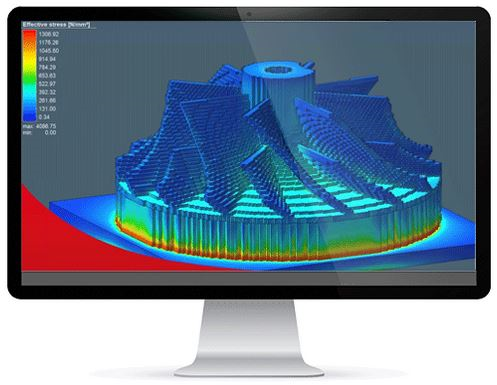
The role of fluid dynamics simulation in the design and development of various products has recently undergone what is arguably a paradigm shift due to the ability to simulate unusually complicated, multi-component, hydraulics using three dimensional (3D) computational fluid dynamics (CFD) models.
Included in such models are all necessary aspects of the physical asset or larger system including thermal, mechanical, electrical, chemical, fluid dynamic, material, life-estimate, economic and statistical.
Hexagon’s 2017 acquisition MSC Software brought significant in-house computer-aided engineering & simulation capabilities that enables engineers to validate and optimise designs using virtual prototypes. Manufacturers in virtually every industry use this software to enhance or even replace the physical prototype ‘build and test’ process that has traditionally been used in product design and engineering. Tools such as Hexagon’s MSC Apex software brings several of these design simulation capabilities to the designer’s desktop.
Aligning Project & Operations Management Synergies
HxGN SDx Projects provides a project-wide, web-based submission, validation, distribution, and review of data and document deliverables. A data centric “digital twin” of the facility can be viewed and navigated to locate relevant data and documentation in context. Electronic workflows, distribution rules, and subscriptions ensure for the correct and consistent review of deliverables with auditable traceability.
Post-project, the combination of predictive maintenance and advanced controls with information management solutions translates into higher-quality plants that will perform better over their lifetime. The HxGN SDx Operations supports operations and engineering information management handling a large volume of unstructured, raw unintelligible information – documents, drawings, data-sheets, in a cloud platform.
Hexagon’s recently acquired j5 International, an operations management software suite of web-based applications that replace the troublesome mix of paper, spreadsheets, databases and other scattered manual data collection methods with a structured, configurable and enterprise-wide digital operations management system – for logbook recording, work instructions, inspection rounds, shift handover, incident management, as well as incorporating best practices for safety, reliability and efficiency. The combination of tools allow customers the ability to incorporate real-time situational awareness of facility operations into their digital twin.
Additional opportunities to enhance operations management capabilities include enterprise asset management processes such as remote service support, automated root-cause analysis and diagnostic reports generation
For The Third Piece Of Its Go-To-Market Opportunity For Digital Twins, Hexagon’s PPM Proposes To Partner With Clients To Leverage Production Related Deep Domain Expertise.
To ensure accurate modelling over the entire lifetime of its production, the client typically uses data from sensors installed on physical assets to determine their real-time performance, operating conditions, and changes over time. This data utilizes a system model to represent the various assets connected together in the production process, and to data-pipes connected to sensors usually over a IoT-platform. The platform allows the system model to pipe-in at various times – real time asset operations data, generated simulation data for system testing, as well as to connect the data seamlessly to a cloud-based simulation model – such as running a computation fluid dynamics based pump simulation, or a dynamic simulation run of plant use-cases that were not in existence or were unknown previously. Also scenarios involving multiple input types, process condition types, equipment types, metallurgy types, piping configurations, etc. Using this data, the digital twin evolves and continuously updates to reflect any change to the physical counterpart throughout the product lifecycle, creating a closed-loop of feedback in a virtual environment that enables companies to continuously optimize their products, production, and performance at minimal cost.
By bringing together engineering data and 3D visualisation data with real-time operating information and powerful algorithm-driven analytics, the Digital Twin enables maximum operational performance while ensuring reliability and safety. In addition, it will allow “what-if” scenarios to be tested against business objectives creating the most informed decisions possible. This environment is integrated with business applications designed to allow plant executives, plant managers and workers to interact with the Digital Twin in real time. This provides capability to balance and optimize trade-offs between important factors over which they prior had minimal visibility or control.
How Typical Components Of A Performance Digital-Twin Could Play Out In A Real Life Use-Case.
- Creating a system-level model of an industrial asset connected by sensors to pipe data to a plant’s internal process management. The system model connects to sensors via the HMI of a SCADA system, to pipe in real operating performance data.
- The system-model connects to a IoT cloud-platform, that can also generate simulated data that mimics the hydraulic system’s operation. With this configuration, the system model can be disconnected from the physical asset and operated offline to explore proposed operating scenarios.
- The model allows instrumentation using additional virtual sensors to measure certain targeted second-order / third-order derivative metrics, not directly measurable via the SCADA’s HMI.
- A detailed 3-D computational fluid dynamic (CFD) model of the asset using simulation software that runs in the cloud and links to data coming directly from the asset via sensors (if online) or the system model (if offline). Along with being the source for designed performance curves used for rapid systems-level simulations, this 3-D model becomes the basis for more-detailed interrogation and diagnostics of off-design operation and performance assessment in anomalous conditions.
The IIoT setup therefore allows simulation models to connect to operating products using a IoT platform so that asset designers and operators can better understand and optimize product performance.
Companies can use these digital twins to detect and isolate faults, perform diagnostics and troubleshooting, recommend corrective action, determine the ideal maintenance schedule based on the specifics of the individual asset, optimize asset operation and generate insights that can improve the product’s next generation. The potential benefits of digital twins are significant. The low-hanging fruit is in optimizing maintenance and operational troubleshooting. But as customers begin to demand outcomes and not just products, the digital twin has the potential to be the key to unlocking this additional value for both product manufacturers and their customers.
Aligning SCADA Monitoring & Control Capabilities To Industrial-IoT
Complementary capabilities supporting successful deployment of operational digital twins include the ability to sensor and monitor real time operational data emanating from plant assets. Process control systems combined with internet-based IoT data management platforms (both edge and cloud components) allow new capabilities to be brought online.
- Real-time multi-site monitoring, supervision and control – to predict asset performance and avoid failures
- Performance analysis – to maximize asset availability, increase productivity, ensure optimum performance and ultimately extend life of asset in field
- Remote operation of assets – in the case of dangerous or inaccessible assets
- Enterprise wide visualization and reporting
- Enterprise collaboration services – social collaboration and PLM collaboration
The IIoT Service Maturity Continuum
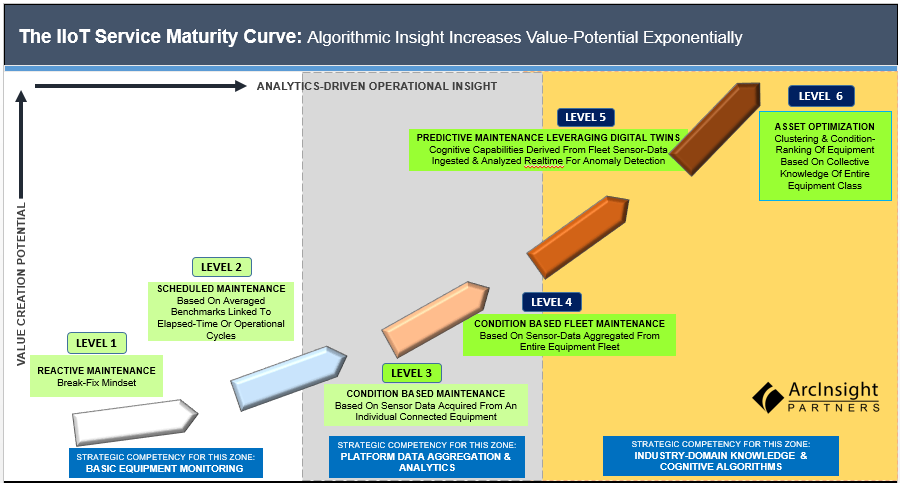
Enterprise Asset Management Capability
Managing predictive asset analytics and condition-based monitoring for large fleets demand the creation of specialized niche digital twin models focused on specific goals related to the assets in question. A few examples of such performance digital twins include the following:
The Life-estimate Digital Twin is able to assess each asset within the plant and how that asset will age relative to its operation and exposure. Fatigue, stress, oxidation and other phenomena are predictable using this Digital Twin and help optimize the maintenance vs. mission reliability of each asset as well as the entire operating system.
The Anomaly Digital Twin uses physics and data-based prognostic models to detect faults for improved asset failure mode management and reduced unplanned downtime. Using fusion techniques with Life-estimate models, anomaly models can increase the accuracy of production machine life curves and further personalize maintenance needs.
The Transient Digital Twin can simulate the plant’s ability to react to changes in environmental or control shifts. This would include startup, ramp rate, minimum generation, and regulation performance. The Digital Twin will provide insights into speed, stability, emissions, and stresses as well as predict the limitations of the plant with configuration and operational changes.
A Thermal Digital Twin for Utilities determines thermal efficiency, plant capacity, and emissions prediction as well as simulation of all of parameters that can affect these outcomes. The technology can be used on all thermal cycles from combined cycle and fossil to cogeneration and district heating. The technology is OEM agnostic and can provide precision to all brands of power plants. However, it best enhances vendor designed power plants by integrating with their own proprietary asset models.
Plant Thermodynamic Models predict plant performance under different operating conditions, dispatch modes and grid (or customer) requirements both under steady state as well as transient operation. A high fidelity digital twin for power plants/fleets requires an array of advanced technologies and deep domain knowledge in multiple industrial areas. The model is created using a user interface (UI) that allows an engineer to define each plant component and how those components are connected to each other. The heat-balance engine contains the fundamental physics of each component in the power plant as well as a “solver” that controls how these components interact such that the final result complies with the laws and principles of thermodynamics. This creates the as-designed model of the power plant.
The purpose is to monitor the operation status of each asset by using time series data collected and transmitted from the customer site to detect abnormality at near real-time.
Generally, there are two types of abnormalities:
- the parameter exceeds a predefined limit, which could cause damage to the equipment if operation continues under such a condition, and
- the anomaly pattern deviates from a normal operational pattern even below the predefined threshold, which could be a symptom of potential failure or improper operation.
By combining customer data with the vendor’s global fleet data, this robust physics based foundation is augmented by empirical data including operational, part condition, outage and site specific environmental information. This proprietary process allows companies (such as GE & Siemens), to leverage its breadth and depth of plant understanding to develop scenario-specific analyses for a customer’s principal assets, enabling prescriptive solutions for optimal value.
Asset Performance Management (APM) business applications incorporating these specialized operational twins fuse anomaly detection techniques, deep domain knowledge, and life-estimate models to provide both foresight and insight allowing the operator to both mitigate and avoid unplanned outages. Anomaly detection techniques provide early warning with progressively more accurate insight into root cause of failure, enabling the customer to turn the unplanned outage into a planned outage or, in the worst case, respond and recover in minimal time.
Modelling Strategic Scenarios
The Operational & Performance Twins provide opportunities for strategic modelling model opportunities to accurately represent the plant or fleet under a large number of variations related to operation – fuel mix, ambient temperature, air quality, moisture, load, weather forecast models, and market pricing. Using these digital twin models and state-of-the-art techniques of optimization, control, and forecasting, applications can more accurately predict outcomes along different axes of availability, performance, reliability, wear and tear, flexibility, and maintainability. The models in conjunction with the sensor data give the ability to predict the plant’s performance, evaluate different scenarios, understand trade-offs, and enhance efficiency. This approach breaks the paradigm where the customer is notified with little supporting information. Instead, the system shares anomaly data with operations personnel via an online knowledge base to provide the best guidance for rapid and safe repairs.
Another opportunity in leveraging life-estimate models to give the customer insight to when particular modes of operation are unwittingly damaging hardware, allowing the operator to avoid these modes. In the cases where operation in that mode is required, additional sensitivity to anomaly detection models is given and recommendations are made to maximize remaining life. This additional insight into the damage mechanism allows for a transition from traditional maintenance (manual based scheduling) to true condition-based, predictive maintenance. Through the APM solution, anomalies and deviations are tracked in a case system and managed by the customer. These insights close the information loop into decisions related to improvement of of operator training and maintenance practice documentations.
Finally, these twins allow for more complex process optimization strategies leveraging data-science. A treatment of this strategy is covered in a separate report “The A.I. Frontier For Industrial-IoT Analytics”.
ArcInsight Partners – Areas Of Research Focus:
-
Digital Transformation Driven By Analytics, Algorithms & Pervasive Connectivity.
-
Industrial-IoT Enabled Manufacturing & Production Process Transformations.
-
Evolution Of Intelligent Cities Enabled By New Mobility Design, Urban Dynamics & Renewables.
-
Emerging Monetisation Strategies Enabled By Saas Models & The Subscription Economy.
About The Author: Praas Chaudhuri is a Silicon Valley based industry analyst, strategy advisor & co-founder of ArcInsight Research Partners. He spends a lot of time with executives at many interesting companies around the world discussing industry dynamics across sectors such as industrial equipment, transportation, process, healthcare & financial services, communications, agri-tech & mining, AI & computer vision, process control & IoT, as well as city managers & CIOs. He has written & presented on a wide range of strategic topics related to industry & vertical dynamics and on business related subject areas. He is also a frequent speaker & panelist at conferences & professional forums, and has published many research-based articles, white-papers and points-of-views.
As a chemical engineer in his early years, Praas was exposed to design & operating experiences at oil-refining plants, designing industrial cooling and waste-water systems, and coal & gas-fired power generating units. Subsequently, he had a long stint as strategic management advisor with global consulting firms such as KPMG and Monitor, as well as senior corporate management at Hewlett-Packard, besides several early stage technology & bioinformatics companies. He holds a bachelors degree in Engineering, a MBA in Finance, and has graduate-level research credentials in Decision Sciences.
